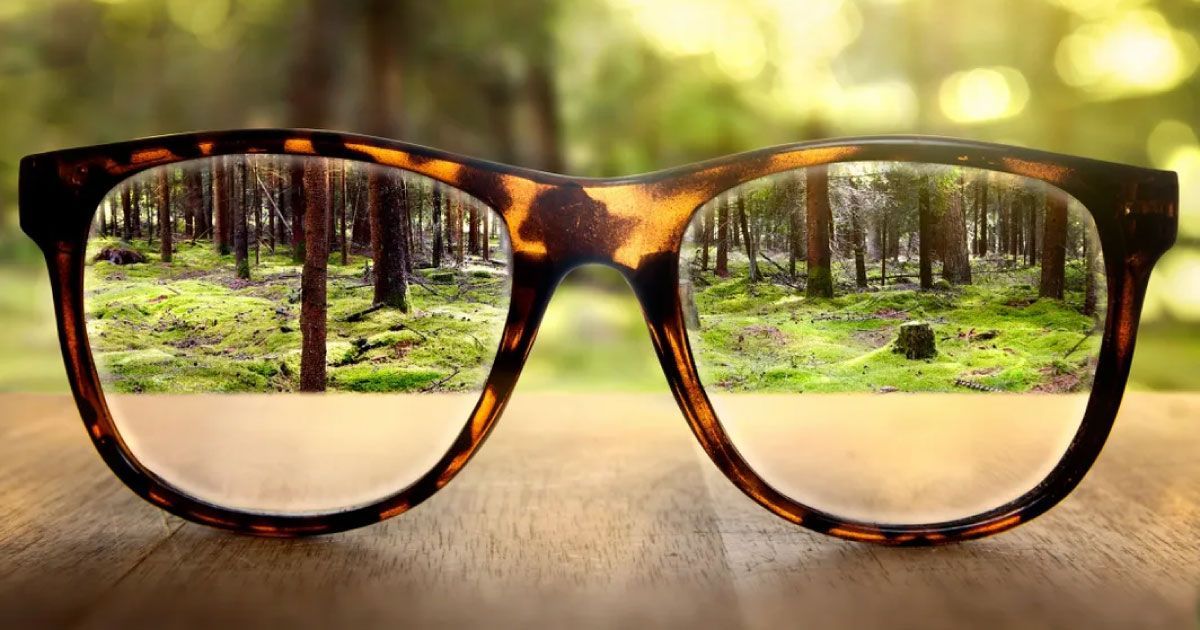Why Progressive Lenses Can Cause Distortion

Read time: 4 minutes
Experiencing distortion with progressive lenses can be quite confusing if you're not sure what’s causing it. Progressive lenses are designed to help people see clearly at different distances without needing to switch glasses, but sometimes they might cause unexpected visual quirks. Understanding why this happens can make a big difference in adapting to your new lenses and improving vision comfort.
Progressive lenses work on the principle of a gradual power change, offering a seamless transition from distance to near vision. This design eliminates the need for multiple pairs of glasses but can introduce some challenges. Distortion might occur as your eyes move through various lens regions, affecting how you perceive the world around you.
Understanding Progressive Lenses
To grasp why distortion happens, it helps to know how progressive lenses function. These lenses have a gradient of increasing lens power, allowing you to focus on distant objects, intermediate spaces, and near tasks smoothly. Unlike bifocals or trifocals, which have visible lines separating different lens powers, progressives blend these powers seamlessly.
The lens features three main zones:
- Distance Zone: At the top, it helps you see things far away.
- Intermediate Zone: In the middle, this area assists with tasks like computer work.
- Near Zone: Located at the bottom, it's perfect for reading.
Adapting to these different zones involves moving your head and eyes together to find the right angle for each task, which might feel strange initially.
Common Causes of Distortion
Distortion with progressive lenses might happen for several reasons. Here's a closer look:
- Adaptation Period: Adjusting to progressive lenses can take time. Your eyes and brain need to learn how to use the new lens zones effectively.
- Visual Habits: The way you move your eyes and head can affect how comfortably you view through the lenses. Changing habits may be necessary for smooth transitions between zones.
- Prescription Accuracy and Fit: If the lens prescription isn’t spot-on or the glasses aren’t fitted properly, distortion may result. The optimal fit ensures that each zone aligns perfectly with your natural line of sight.
Addressing these elements can help minimize distortion and make wearing progressive lenses a more pleasant experience.
Solutions and Adjustments for Progressive Lenses
Distortion with progressive lenses might seem daunting, but there are ways to ease into using them. By understanding what causes these optical blips, you can find solutions that enhance your comfort while wearing them.
Here are some practical tips to help reduce distortion:
- Proper Lens Fitting: Ensure your glasses fit properly. The alignment of the lenses with your eyes is crucial because it helps you seamlessly switch between different vision zones.
- Regular Eye Check-Ups: Schedule periodic visits to your optometrist. Updating your prescription regularly is important to maintain clear vision and ensure your glasses are providing the correct support.
- Digital Lenses for Glasses: Consider digital lenses. They’re designed to improve clarity and ease eye strain by providing a more precise lens surface. This technology helps maintain a smoother visual experience, making progressive lenses more comfortable to use.
- Adjust Eye and Head Movements: Be mindful of how you move. Use your nose to point to what you want to see, moving your head instead of just your eyes to look through the correct zone of the lens.
- Patience During the Adaptation Period: Give your brain and eyes time to adjust. It's normal to feel odd in the beginning. Consistent wear speeds up this adaptation period.
By implementing these suggestions, adapting to progressive lenses becomes a little easier. With time and practice, you'll find managing the slight distortions less challenging.
Embrace Clear Vision in San Diego
Navigating the world with progressive lenses takes some getting used to, but with the right advice, it becomes a part of your daily routine. Emphasizing proper fit and regular eye exams can significantly improve your overall experience. These measures ensure the lenses work to their full potential and reduce the discomfort associated with distortion.
For those living in vibrant places like San Diego, having a clear vision allows you to take in all the aspects of your environment effortlessly, whether it's appreciating the stunning beaches or reading signs as you explore the cityscape. By understanding the nuances of progressive lenses, you ensure your glasses enhance your daily life rather than hinder it.
The Takeaway
Adapting to progressive lenses may feel challenging at first, especially if distortion catches you off guard—but it’s a normal part of the adjustment process. Knowing how these lenses work and why visual quirks happen empowers you to move through the adaptation period with more confidence and comfort. With time, patience, and guidance from your eyecare professional, progressive lenses can become a seamless part of your daily life - delivering clear, comfortable vision at every distance.
If you're looking for a smoother visual experience with your eyewear, exploring digital lenses for glasses may be a smart move. These advanced lenses can reduce eye strain and sharpen visual clarity, especially when adjusting to progressive lenses. Urban Optiks Optometry offers solutions that fit your lifestyle and support long-term comfort and vision health.
Share this blog post on social or with a friend:
The information provided in this article is intended for general knowledge and educational purposes only and should not be construed as medical advice. It is strongly recommended to consult with an eye care professional for personalized recommendations and guidance regarding your individual needs and eye health concerns.
All of Urban Optiks Optometry's blog posts and articles contain information carefully curated from openly sourced materials available in the public domain. We strive to ensure the accuracy and relevance of the information provided. For a comprehensive understanding of our practices and to read our full disclosure statement, please click here.


















